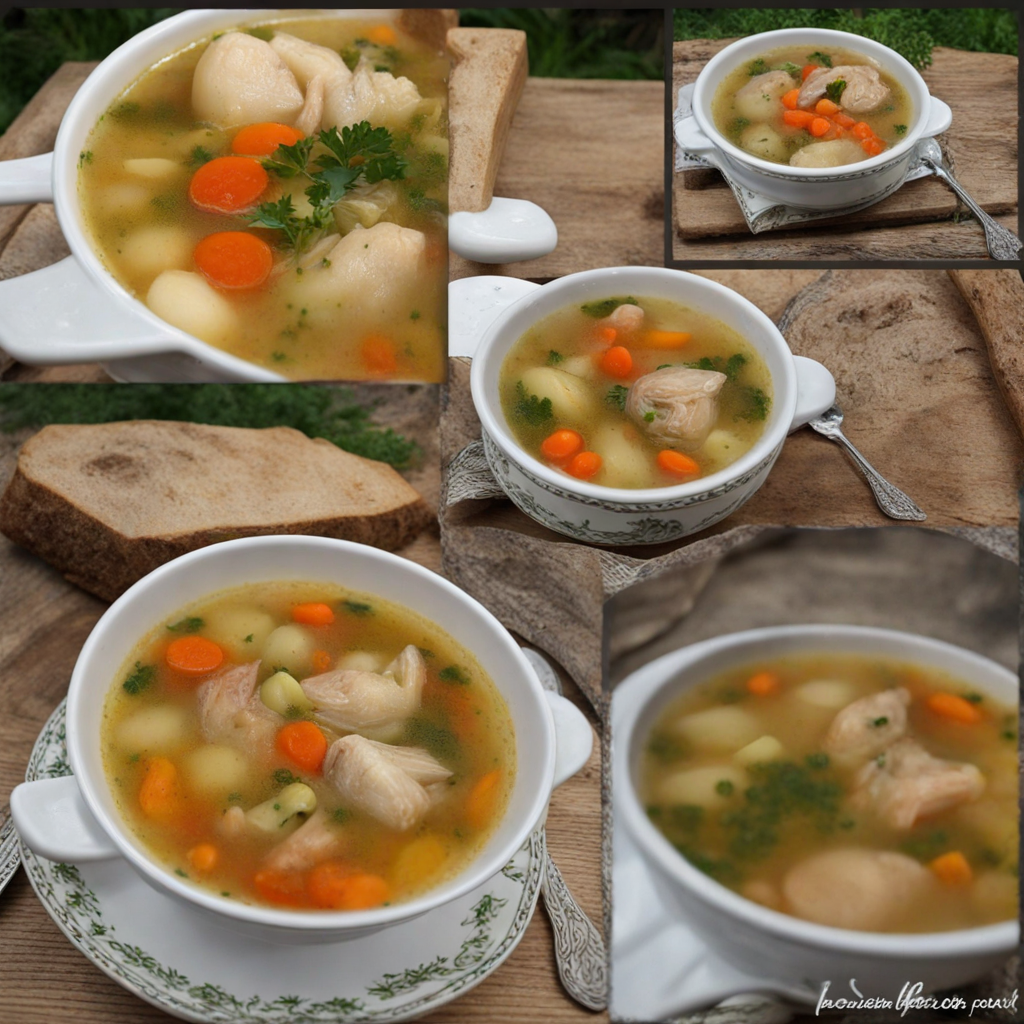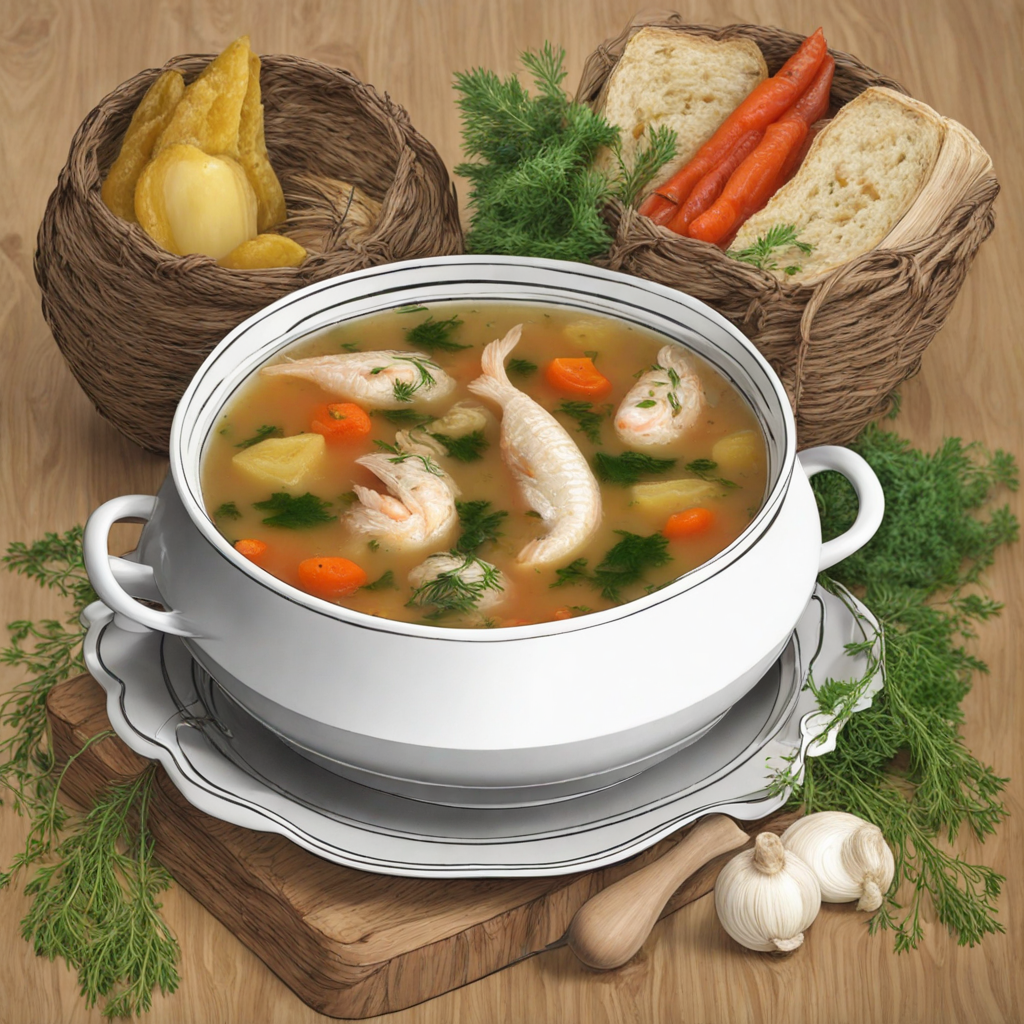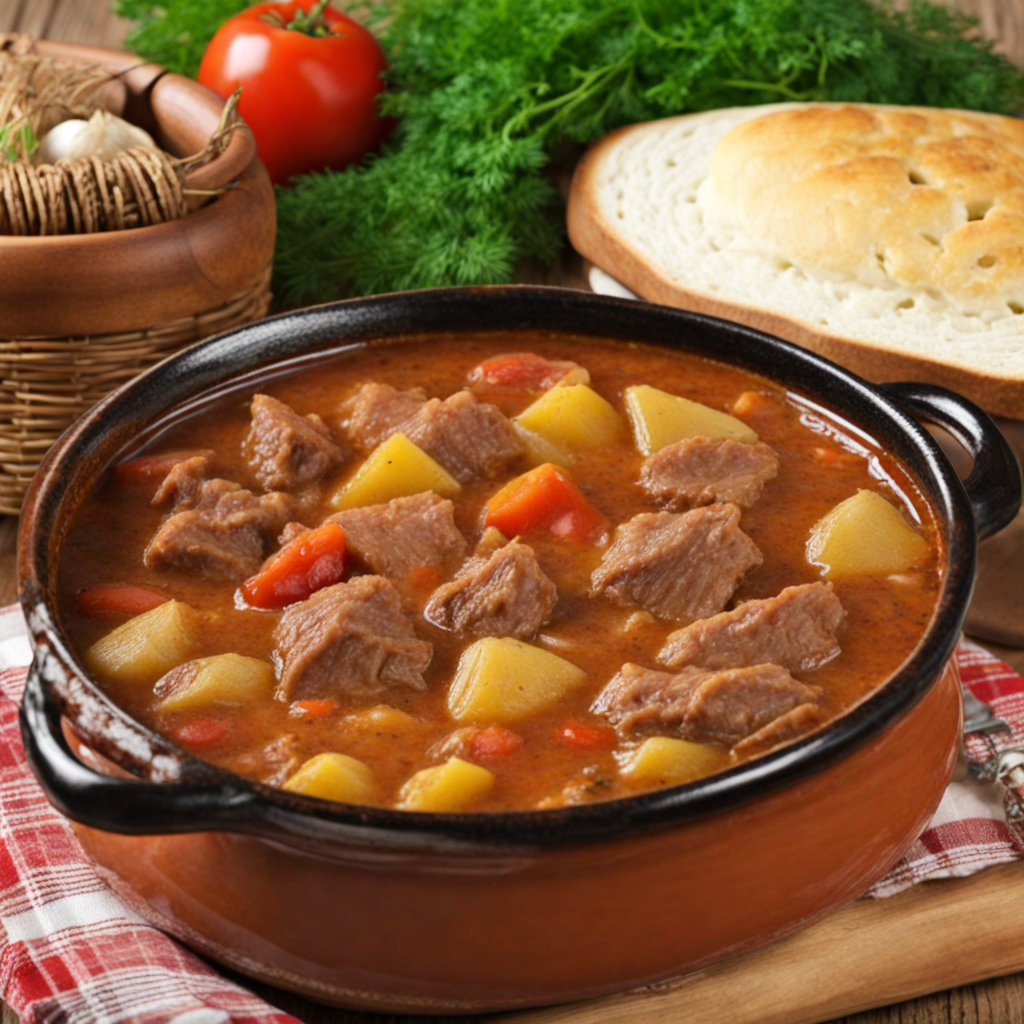Borș de pește
Borș de pește is a traditional Romanian fish soup that embodies the essence of the region's culinary heritage. This dish is a delightful blend of fresh fish, typically sourced from the Danube River or the Black Sea, and a medley of vegetables, including carrots, onions, and bell peppers. The soup is renowned for its distinct sour flavor, achieved by the addition of fermented wheat bran or borș, a sour liquid that gives the dish its name. The combination of fresh herbs, such as dill and parsley, further elevates the aromatic profile, making each spoonful a refreshing experience that highlights the natural sweetness of the fish and the earthiness of the vegetables. The preparation of Borș de pește is a labor of love, often taking place in large pots over an open flame, which infuses the soup with a smoky depth. As the fish simmers, it releases its delicate flavors into the broth, creating a rich and hearty base. Traditionally served with a side of polenta (mămăligă) and a sprinkle of fresh herbs, this dish is not just a meal but a social experience, often enjoyed with family and friends around the table. Each region in Romania may have its own variation, introducing different types of fish or additional ingredients, making every bowl a unique representation of local tastes. What truly sets Borș de pește apart is its balance of flavors and textures. The tender fish, combined with the vibrant vegetables, creates a satisfying dish that is both comforting and revitalizing. The tangy undertones from the borș provide a refreshing contrast to the richness of the fish, making it a perfect choice for those looking to explore new culinary landscapes. Whether enjoyed on a chilly evening or during a festive gathering, Borș de pește is a testament to Romania's rich culinary tradition and a must-try for anyone seeking to broaden their palate.
How It Became This Dish
The History of Borș de Pește: A Romanian Culinary Treasure #### Origins Borș de pește, or fish borscht, is a traditional Romanian dish that is emblematic of the country's rich culinary heritage. This soup, characterized by its tangy, sour flavor, is made primarily from freshwater fish, often sourced from the Danube River and the Black Sea, regions that have been central to Romanian life for centuries. The dish’s origins can be traced back to several influences, including the indigenous practices of the Dacians and the culinary customs brought by various invading cultures throughout history. The word "borș" itself is derived from the Slavic word for sour, referencing the fermented component of the dish. Traditionally, it is made using fermented wheat bran, which contributes to the soup's unique, tart flavor. The use of fermentation in Romanian cuisine has deep historical roots, with early agricultural societies relying on this process to preserve food. In the case of borș de pește, the fermentation not only adds flavor but also enhances the nutritional profile of the dish. #### Cultural Significance Borș de pește is more than just a meal; it is a reflection of Romanian culture and identity. It is particularly popular in coastal regions and areas along rivers, where fishing is an integral part of life. This dish represents the connection between the people and their environment, illustrating the importance of local resources in shaping culinary practices. The soup is often associated with communal gatherings and celebrations, embodying the spirit of hospitality that is deeply ingrained in Romanian culture. At family gatherings, especially during the holiday season, borș de pește is frequently served, symbolizing the importance of sharing and togetherness. It is also a dish that showcases the skills of local cooks, who often have their own variations based on regional fish species and family recipes. Furthermore, the dish has a seasonal dimension, as it is more commonly prepared in spring and summer, coinciding with the fish spawning season. This seasonal aspect not only aligns with traditional fishing practices but also emphasizes the connection between food and the rhythms of nature. #### Development Over Time The evolution of borș de pește mirrors the broader changes in Romanian society and its culinary landscape. In the early days, the preparation of this soup was a straightforward affair, primarily involving freshly caught fish, water, and the souring agent. As trade routes opened and cultural exchanges flourished, new ingredients and techniques were incorporated into the dish. By the 19th century, the emergence of a middle class in Romania led to a greater interest in culinary refinement and sophistication. This period saw the introduction of various spices, vegetables, and herbs, such as leeks, onions, and dill, which enhanced the flavor profile of borș de pește. Simultaneously, cookbooks began to emerge, documenting traditional recipes and elevating the status of Romanian cuisine. The 20th century brought significant changes to Romania, including political upheavals and economic challenges. During the communist era, the availability of certain ingredients fluctuated, leading to variations in traditional recipes. Many families adapted by using whatever fish was readily available, which resulted in diverse regional interpretations of borș de pește. This adaptability has become a hallmark of Romanian cuisine, demonstrating resilience and creativity in the face of adversity. In contemporary Romania, borș de pește continues to thrive, celebrated both in homes and restaurants. Chefs are now experimenting with modern techniques and presentations, while still honoring traditional flavors. While some purists maintain that the soup must be prepared with specific types of fish—such as carp, catfish, or perch—others embrace a more eclectic approach, incorporating different seafood to suit personal tastes. #### Regional Variations and Ingredients The beauty of borș de pește lies in its versatility. Different regions of Romania have their own unique takes on the dish, influenced by local ingredients and cultural preferences. In the Danube Delta, for instance, fishermen often prepare the soup with a variety of fish, reflecting the bounty of the waters. Here, the use of additional herbs like lovage is common, imparting a distinct flavor that sets their version apart. In the coastal regions near the Black Sea, the soup may be enhanced with elements of Mediterranean cuisine, such as tomatoes or bell peppers, showcasing the influence of neighboring cultures. This regional diversity not only enriches the dish itself but also fosters a sense of pride among local communities, each claiming their own "best" version of borș de pește. #### Borș de Pește in Modern Cuisine In recent years, there has been a resurgence of interest in traditional Romanian dishes, including borș de pește. With the growing movement towards culinary tourism, many visitors to Romania seek out authentic dining experiences that highlight the country's gastronomic heritage. Restaurants in urban centers and rural areas alike are embracing this trend, offering borș de pește as a staple on their menus. Moreover, the dish has found its place in food festivals and cultural events, where chefs showcase their skills and creativity. This renewed focus on traditional recipes has not only helped preserve culinary heritage but has also fostered a sense of community among those who share a love for Romanian cuisine. #### Conclusion Borș de pește is more than just a soup; it is a cultural artifact that encapsulates the history, traditions, and resilience of the Romanian people. From its origins rooted in the natural abundance of the land and water to its evolution through time, this dish reflects the dynamic interplay between environment, culture, and culinary practice. As Romania continues to navigate the complexities of modernity while honoring its past, borș de pește stands as a testament to the enduring power of food to bring people together, telling stories of identity, community, and celebration.
You may like
Discover local flavors from Romania







